Steve and his wife have been locals of the Blue Mountains since residing in Katoomba from 2001. Before they met, quite separately they had each visited Katoomba as tourists back in 1994.

Then after they first met, a favourite and regular holiday became to stay weekends in the Upper Blue Mountains in self-contained cottages, before ultimately buying one themselves. As it turns out, Steve’s mother had visited Katoomba from Melbourne with her family as a child in the 1950s, with fond memories of enjoying tea and cake at Café Niagara in Main Street, since renamed Bathurst Road.
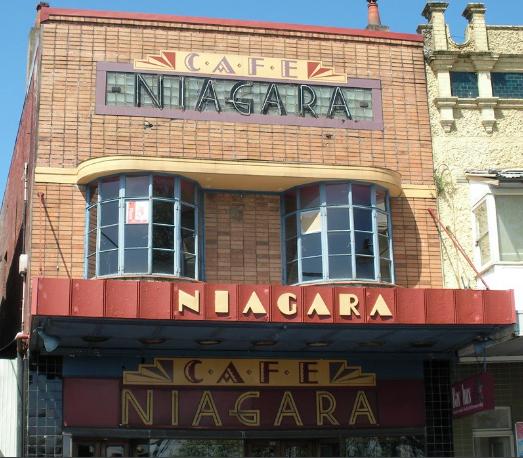
The idea of running tours came to our now Tour Director and business owner Steve on Saturday 18th September 2010, whilst holidaying with family in Northern Ireland and participating with his wife on a hiking day tour run by a volunteer guide with Cavehill Walking Tours Belfast.
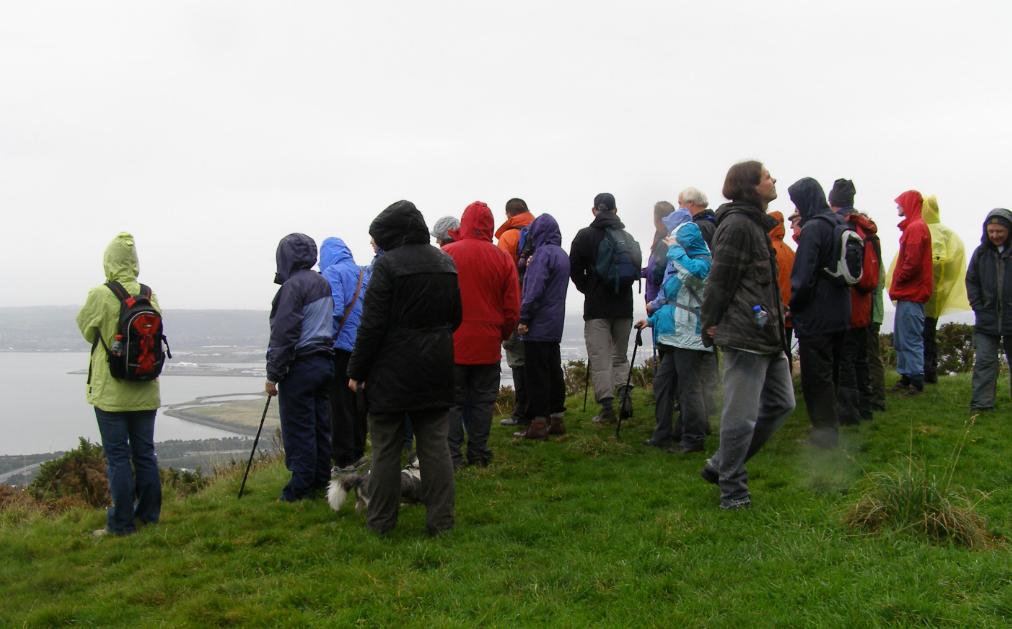 The hiking tour was so fascinating and varied covering nature, history, pre-history, culture, geology, landscape and stories; that Steve was enthralled in the idea of doing something like this himself, so he did. He also thought it would also be a productive means to recover his youthful fitness and to get away from his sedentary computer-based work.
The hiking tour was so fascinating and varied covering nature, history, pre-history, culture, geology, landscape and stories; that Steve was enthralled in the idea of doing something like this himself, so he did. He also thought it would also be a productive means to recover his youthful fitness and to get away from his sedentary computer-based work.
The idea of establishing a business as a tour operator was then conceived in 2013 while Steve our now Tour Director was studying for a Certificate IV in Guiding at Sydney Institute of Technology in the Marcus Clark Building under the tutelage of Garry Hartley, Head Teacher of Travel and Tourism and while working casually as a bus driver with Blue Mountains Buses locally in Katoomba, including commentating and driving the olde Blue Mountains Trolley Tours ‘bus’.
Steve had previously worked as a Coach Captain with Australian Pacific Tours out of the old Sandringham Depot in southern Melbourne. It was during the Recession 1990-1992. By mid-1992 Steve had relocated from his home town in Melbourne to Sydney’s eastern beaches to escape both Melbourne’s depressing weather and Kirner government.
Our Choice of Business Name
The business name was initially going to be ‘Blue Trail’, which had been Steve’s initial suggestion for a simple and unique name proposed to Blue Mountains Council in 2013 for what is now more complicatedly called the ‘Great Blue Mountains Trail’ but that’s government for you. It’ll probably next will get the acronym GBMT and be as cryptic as ‘BMD’ (Blue Mountains Drive).
According to council’s website:
“The Great Blue Mountains Trail is a big idea, to develop a regional trail from east to west across the Blue Mountains ridgeline, accessible from all towns, villages and train stations along the way. The Trail links to the Anderson, Ingar and the Oaks fire trails to the east, and will eventually link up with Lithgow and Oberon trail networks to the west.
The Upper Mountains component of the trail will extend from Wentworth Falls through to Mount York and will provide a variety of pedestrian and cyclist opportunities to travel through the scenic natural areas and heritage townships of the Blue Mountains.
The Great Blue Mountains Trail is identified in the Blue Mountains Bike Plan 2020. Once the trail is completed it will play an important role in meeting the growing demand for safe cycling facilities and provide a safe corridor connecting residents and tourists with town centres and natural bushland environments.”
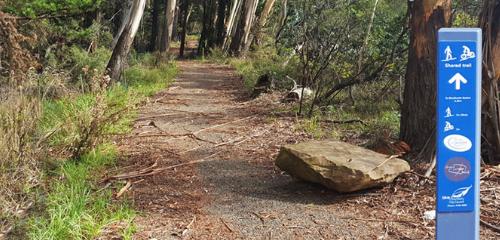
Steve was happy to have gotten involved in the shared bicycle/walking trail idea at the time back in 2013, but he had instead suggested it be located on the railway side of the Great Western Highway alongside the railway but safely fenced off. In this way the grade of the trail would approximate the constant grade of the railway line and so make the journey more accessible to people of all ages and a more popular exercise route linking the villages of the Blue Mountains.
But that didn’t happen, and council chose to construct the cycle route on the western side of the highway which involved clearing native bushland and which has resulted in a very hilly route that few people use. It is likely that the recurring widening of the highway will see the route disappear in sections.
In March 2013, Steve increasingly felt a need to have an outdoor break from the computer and home office indoor environment, a weekly outdoor commitment and best one that earns money too. It would be healthy and longer term vital for his mental and physical health.
Another name was to be ‘Habitat Tours’ as an extension of his focus on Nature conservation though his business The Habitat Advocate since 2006.

The ‘Nature Trail’ Name
While exploring bushwalking tracks through the rainforested section of Megalong Road on the approach into the Megalong, Steve came across Coachwood Glen Nature Trail.
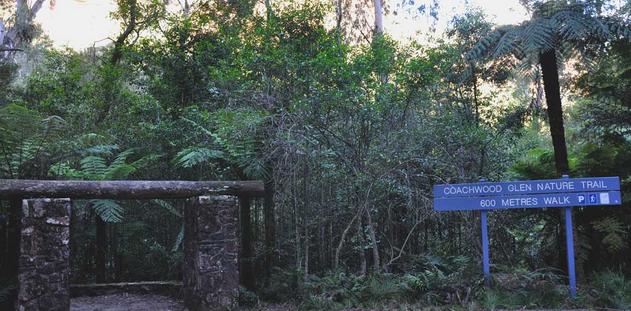 Upon returning home, Steve checked the definition of ‘nature trail’. In the English Cambridge dictionary, ‘nature trail’ is a noun meaning “a path through an area of the countryside that is intended to attract the walker’s attention to interesting plants, animals, and other features”.
Upon returning home, Steve checked the definition of ‘nature trail’. In the English Cambridge dictionary, ‘nature trail’ is a noun meaning “a path through an area of the countryside that is intended to attract the walker’s attention to interesting plants, animals, and other features”.
That’ll do, thought Steve. Then couldn’t believe his luck when checking for business names availability in Australia and nature trail was not taken, nor was the domain. There was a business already called Nature Trail Travel and Tours, but that was in Kathmandu, someway outside Steve;s intended territory scope of the Blue Mountains in Australia.
So behold on Tuesday 10th December 2013, Steve registered Nature Trail as a business and naturetrail.com.au as a website domain and the business was born.
The motto? Well, ‘Back to Nature’ seemed apt, because that is the whole idea for setting up a tour operation. It has a better ring to it than “Getting Away from the Computer’.
Education and Training
By this time, Steven had begun in October 2013 driving buses with Blue Mountains Bus Company joined out of the local Katoomba depot which included coach charter for corporate groups and the driving and commentating the tourist shuttle Trolley Bus shuttle service.
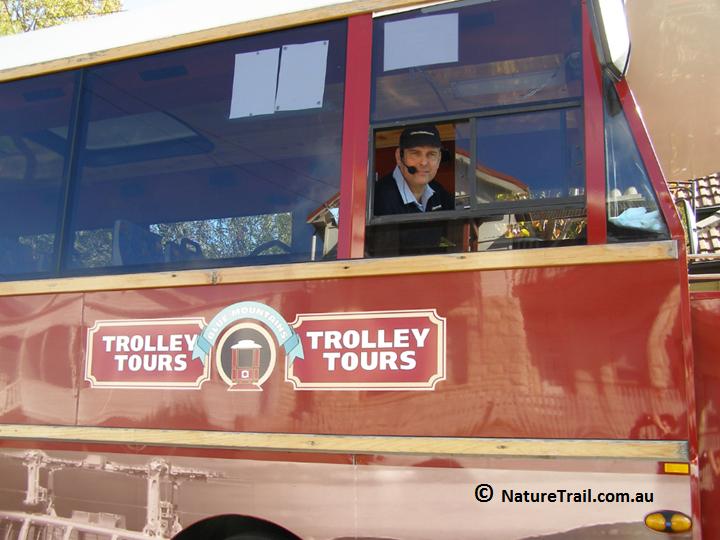
In December 2013 Steve graduated from Sydney Institute of Technology in Ultimo with a Certificate IV in Guiding, then from Western Sydney Institute at the nearby Wentworth Falls campus in December 2014 with a Certificate III in Outdoor Recreation (bushwalking) and Remote Area First Aid, in July 2014 from Australia 4×4 Training a Drive and Recover a 4WD certificate, then in December 2016 a Diploma in Outdoor Recreation and a Food Safety Certificate both (for outdoor and remote catering) from Western Sydney Institute at the nearby Wentworth Falls campus.
Business Setup Compliance
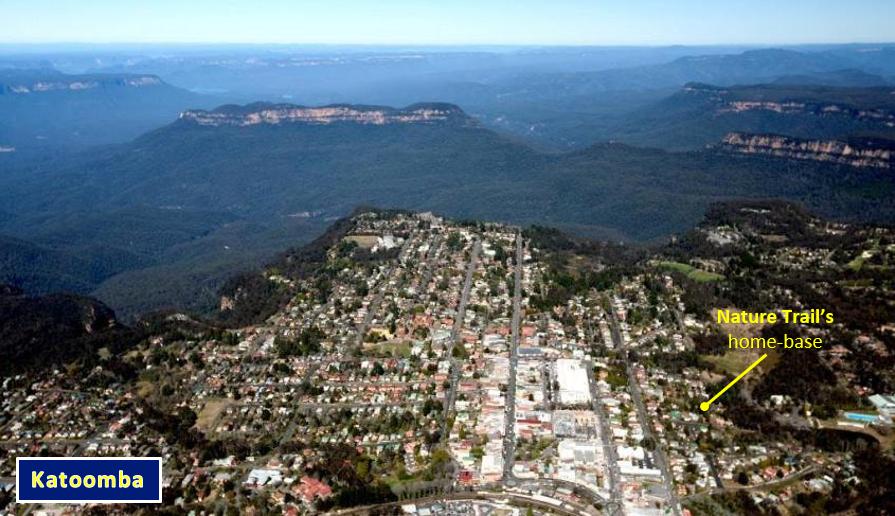
In October 2015, public liability insurance policy coverage of $20 million was first taken out for Nature Trail and from 1st September 2015 Nature Trail obtained its first nature based recreation commercial operator’s license with Blue Mountains Council.
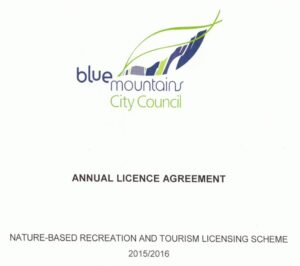
Still to be done was to obtain a Parks Service Ecopass license in order to commercially operate tours in New South Wales ‘national’ parks, starting with the Blue Mountains National Park surrounding Katoomba.
However, applying for an Ecopass has proven to be an onerous compliance hurdle.
Required as part of the Ecopass application process are as follows:
- An annual $20 million public liability insurance policy, prepaid before application. The annual premium is from $1600 just for hiking tours.
- Submitting a detailed business Operations Manual that must include details of the company/trading name and a description of your business/tourism product, including the activities you want to conduct on park, business vision, business plan, target market, unique selling points, what you hope to achieve for your clients by operating in our national parks, business policies and procedures, environmental and cultural practices and safety measures, evidence of high quality and extensive knowledge, experience and skills in all aspects of the business’s activities, appropriately experienced, qualified and trained staff, a sound understanding of safety and environmental issues related to your activities and effective risk management procedures.
- Describing the products and programs that the tour operator intends to provide in ‘national’ parks, including details of objectives of activityies (desired outcomes), client expectations, the types of activities (such as guided bushwalking), the intended locations to visit, tour durations, promotional material, including key attractions and a programme guide. [Editor’s note: Points 2 and 3 are Big Brother stuff, surely such business strategic information is commercial-in-confidence – so we will redact key bits].
- Mid-year, if we wish to add a new track route to our suite of tours, there is a $50 penalty for each addition. [Editor’s note: The Parks Service calls these ‘amendments’; we call it unnecessary admin gouging].
- Environmental and cultural interpretation information
- Specific environmental sustainability and minimal impact practices and expectations will vary depending upon your type of activity, details of how your business will fulfill it’s environmental responsibilities.
- Staff management and qualifications, ensuring all your guides and employees have and maintain the relevant competencies and skills for leading and guiding your activities. “You must also ensure that you carry out your business activities in a safe and reliable manner under the Occupational Health and Safety Act 2000. Outline your OHS policies and procedures.”
- Risk management and Emergency Response Plan for each activity which outlines procedures to be followed in the event of natural or other disaster, injury, illness or delay, including details of identifying hazards and assessing risks, managing risks, incident/emergency response procedures, a copy of your activity incident report, client-to-staff ratios, activity equipment standards, first aid qualifications and equipment, equipment maintenance and replacement procedures, weather contingencies, documentation and record keeping.
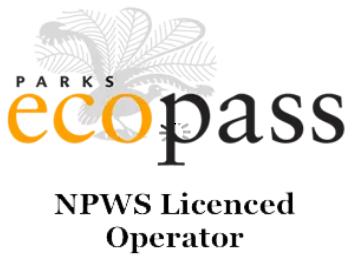
However, to obtain all this lot is nothing short of undertaking a Degree in Commercial Bushwalking (which doesn’t exist), and that if offered by TAFE would cost in the order of $20,000. So far, Steve is still to completing his Eco-Pass application for all this. Undaunted (sort of) Steve pressed onwards…
Business Launch
In August 2017 with encouragement from business coaching friend Chris Borrett, Steve Ridd decided to officially launch his business Nature Trail, a website and commence organising and leading practice tours with Friends of Nature Trail.
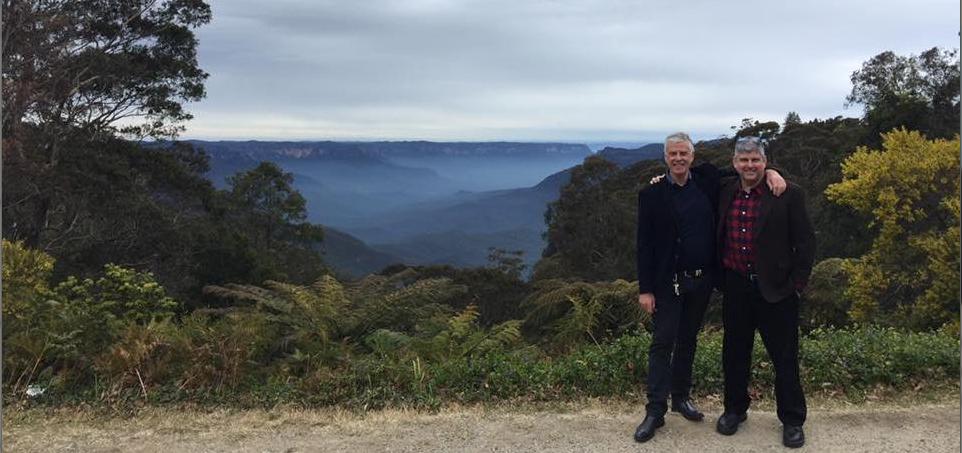
Steve (right) with Chris near Kiah Lookout opposite The Rooster restaurant above the Jamison Valley
On Saturday 2nd September 2017, Steven informally launched Nature Trail at the Nature Trail Base in Katoomba with friends, tea and scotch finger biscuits. The business aims and approach were explained emphasising the focus on researched interpretative guiding and discussion was had about the first Spring Programme for hiking tours and road tours.
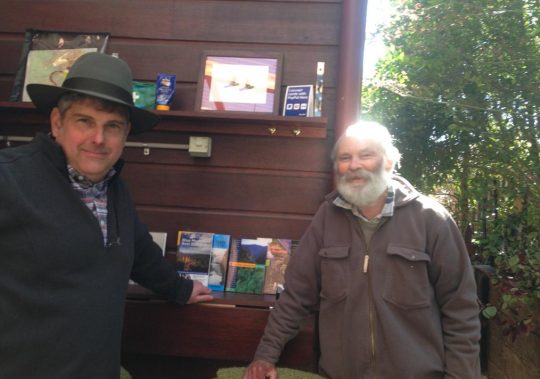 Steve Ridd with friend John Low OAM (historian, author and librarian) at the business launch
Steve Ridd with friend John Low OAM (historian, author and librarian) at the business launch
From September 2017 non-commercial practice tours were undertaken weekly at no charge with Friends of Nature Trail – mostly Steve’s friends/neighbours. This included half day and full day guided hiking tours in the Jamison Valley, Grose Valley, Mount Victoria, Kanangra Boyd National Park, Capertee Valley, Dunns Swamp, Bylong Valley, as well as formal garden tours, art trails, and backroad heritage tours through the Lithgow region and throughout the New South Wales Central Tablelands. All tours started from Nature Trails base in Katoomba.
Finally on 4th November 2017, Steve delivered his first commercial tour to a group of eight guests.
In November 2018, Steve obtained authorisation as a Booking Service Provider with the newly established NSW Government’s Point-to-Point Transport Commissioner.
On 1st August 2019, Steve purchased a second hand Range Rover off a friend for use as a dedicated tour vehicle. It is a 1995 P38 4.6 litre HSE* in British Racing Green. Being a British classic, we’ve Christened it ‘Excalibur’.

Excalibur on our Outback 2800km trip Katoomba to Broken Hill and back during the 2020 pandemic lockdown
Considerable expense has since gone into restoring this Range Rover and fitting it out for luxury commercial touring.
[*HSE is the abbreviation for High Specification Equipment – aka a top of the range model]
From November 2019 the RFS bushfire catastrophe incinerated 80% of the Greater Blue Mountains World Heritage Area, blanketing the region is dense woodsmoke, shutting down the regional economy particularly tourism and locking out all visitation up until February 2020. Then the China Virus pandemic arrived in March 2020, locking down the economy and tourism into 2021 and likely beyond.
Since then, given that most of the wildlife throughout the Greater Blue Mountains World Heritage Area (our nature-based interpretative tour territory) has been burned to death, 80% of the vegetation incinerated and the landscape a charred and barren moonscape, many tracks closed due to the bushfire catastrophe and unrepaired landslips, and then rolling travel and tourism lockdowns due to government quarantine failures, well one can appreciate why we have put off applying for an Eco-Pass.
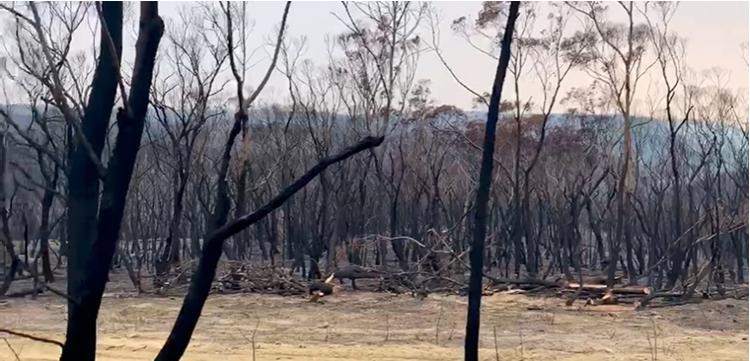
Back to Top of Page
This webpage updated 18th October 2022.














